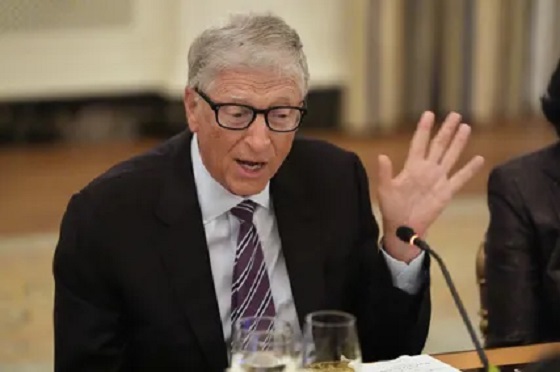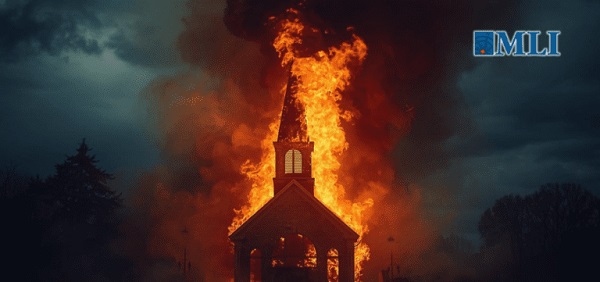MAiD
Canada’s euthanasia regime considers death less harmful than offering help to live

From LifeSiteNews
A Canadian judge has ordered an injunction from a father to be lifted so that his 27-year-old autistic daughter can be permitted to undergo a doctor-assisted suicide.
On March 14, I reported on the story of a 27-year-old Albertan woman with autism who had been approved for euthanasia in December; she was planning to receive a lethal injection on February 1 when her father, whom she lives with, successfully obtained a temporary court injunction the day prior. Her father argued that her autism and “possibly other undiagnosed maladies do not satisfy the eligibility criteria for MAiD [Medical Assistance in Dying]”; the daughter’s attorney argued that it was “none of [her father’s] business.”
It fell to Court of King’s Bench Justice Colin Feasby to examine the approval process and to determine whether the young woman was eligible for suicide-by-doctor. He admitted to being troubled by the case. “As a court, I can’t go second guessing these MAiD assessors… but I’m stuck with this: the only comprehensive assessment of this person done says she’s normal,” Feasby stated. “That’s really hard.” It shouldn’t have been.
The desperate father has received another brutal setback in his quest to save his daughter from Canada’s euthanasia regime. On March 25, Feasby ruled that the injunction preventing her death be lifted. As the Calgary Herald put it: “Preventing a Calgary woman’s medically assisted death would cause her irreparable harm, a judge ruled Monday.” Reread that sentence a moment and let it sink in: preventing a woman’s death would cause her irreparable harm. In Canada’s euthanasia regime, words mean nothing. Suicide is healthcare. Stopping suicide causes irreparable harm. Death… doesn’t, somehow.
“The harm to MV [the woman in question] if the injunction is granted goes to the core of her being,” Feasby stated in his written ruling. “An injunction would deny MV the right to choose between living or dying with dignity. Further, an injunction would put MV in a position where she would be forced to choose between living a life she has decided is intolerable and ending her life without medical assistance. This is a terrible choice that should not be forced on MV, as attempting to end her life without medical assistance would put her at increased risk of pain, suffering, and lasting injury.”
Note here that there is no limiting principle to this ruling. That logic, such as it is, would apply to any suffering person experiencing suicidal ideation. It is also a false choice. The choice is not between dying by lethal injection or dying by some other form of suicide; it is between dying by lethal injection or being cared for by her loving father, who is ready and willing to do whatever he can for her. As Feasby himself said in his previous comments on the case: “The only comprehensive assessment of this person done says she’s normal.” Apparently, that didn’t matter.
Addressing the young woman in his ruling, Feasby added:
What I know of your journey through the health-care system from the evidence in this case suggests that you have struggled to find a doctor who could diagnose your condition and offer appropriate treatment. I do not know why you seek MAiD. Your reasons remain your own because I have respected your autonomy and your privacy. My decision recognizes your right to choose medically assisted death; but it does not require you to choose death.
Keen readers will notice that these statements are also in conflict. The young woman “struggled to find a doctor who could diagnose your condition and offer appropriate treatment”; that is why she is seeking euthanasia. Feasby can pretend not to know this, but the evidence is clear.
Feasby did admit that his ruling would be deeply harmful to the parents of the young woman. “The harm to WV [the father] if the injunction is not granted will be substantial,” he wrote. “The pain of losing a child, even an adult child, is not something that any parent should experience. (The parents) have devoted their lives to raising MV from birth and have continued to support her since she has come of age. They will understandably be devastated by her death. For many parents, the loss of a child is a life-changing event that they never truly recover from. The loss is immeasurable.”
He is right. He could have made a different decision. The 27-year-old had to shop around for doctors willing to sign off on her application for euthanasia; she initially struggled to find the necessary two. But in the end, she succeeded. The father can appeal Feasby’s decision, but his attorney has not commented on whether he will do so. If he does not, he will face what so many Canadian families have endured over the past several years: the knowledge that his family member will expedite her death, and that he is helpless to stop it.
Great Reset
Viral TikTok video shows 7-year-old cuddling great-grandfather before he’s euthanized

From LifeSiteNews
Karly Vavra, the little girl’s mother, told People that she chose to share the video in order to honor her grandfather—but also to normalize euthanasia.
A video of a 7-year-old girl sharing a “final cuddle” with her great-grandfather before he is euthanized has gone viral on TikTok, racking up millions of views.
@karlsbergggg Sobbing 😭 #MAID #medicallyassisteddeath #grandpasgirl #greatgrandpa #greatgrandparents
The video shows the child curled up next to an elderly man, sitting straight on the couch, their final moments together captured. “This is my 96 year old grandpa with my 7 year old,” the caption reads. “He’s doing MAID soon. I tried explaining gently to my daughter that this was the last visit she’d have with him. This is what she did the second she walked in. He’s so happy.”
Karly Vavra, the little girl’s mother, told People that she chose to share the video in order to honor her grandfather—but also to normalize euthanasia. “The feeling is very bittersweet,” she said. “I look back with smiles and tears.” She admitted that she knows “my daughter didn’t fully understand these were her last moments with him.”
Her grandfather, who had chosen euthanasia, did understand the gravity of the moment. “My grandpa knew those were his last moments with her,” Vavra said. “Him looking down in that short moment, I believe, was his way of trying to hide emotions as he was a very proud man.” Her grandfather was scheduled to be killed by lethal injection just days later.
READ: Glenn Beck offers to fund life-saving surgery for Canadian woman approved for euthanasia
Vavra says her grandfather was always a favorite of neighborhood children, who were drawn to him. “I am so grateful both my kids got to know him, though, as not many children get [much] time, if any, with a great grandparent,” she said. “My grandpa was honestly the sweetest man. He loved children, gardening, golf, music and was VERY opinionated… Him and my kids were always laughing with each other, and he loved how loud and proud my daughter was! I hope she is strong like he was and always laughs and sees the brighter side.”
Vavra posted the video because she wanted to celebrate her grandfather’s euthanasia. “I posted this because I truly believe MAID can be a wonderful thing,” she told People. “Letting people go the way they want, with dignity, and not suffering… A lot of religions don’t believe in MAID and some comments were more aggressive than others. Seeing how negative some of the responses were made me really want to advocate for the MAID program.”
“Her connection to MAID began long before her own grandparents made their decisions, as she previously worked on a case in British Columbia after she says many of her coworkers opted not to participate,” People reported.
“I am a very open, understanding person and believe in ‘your body your choice’ which is why I volunteered,” she says...This year alone brought unimaginable loss for her family. “My parents and aunt have had a harder time because both their mom and dad decided to do MAID this year, so it’s definitely been a rough year, but we are sticking together as a family and really trying to cherish all our moments together,” Karly shares.
There are over 10,000 comments on Vavra’s TikTok video, many of them expressing horror at the normalization of putting elderly people to sleep like sick household pets.
“I always try to be honest with my children,” Vavra said. “I explained that Big Papa (what my kids called him) was in a lot of pain and that he would be going to meet Big Grandma on Saturday (my grandma also did MAID this year). I explained that a very nice doctor and nurses were coming and they were going to give him some medicine and he would fall into the best sleep ever but forever, and that he wouldn’t be in pain anymore.”
It is notable that despite the irreligious basis of euthanasia, spiritual language is often incorporated into euthanasia conversations in order to soften the reality of what is taking place.
This is a new Canadian reality: Children losing their parents, grandparents, and great-grandparents not to natural death, but to lethal injections. Their goodbyes are defined by moments that do not have to be the last but have been chosen. There could have been more conversations. More cuddles. More love. But there was not—and that was a decision. “Seeing her link arms with him was very touching but of course very painful,” Vavra said. “Both loving each other so much. I wish we could have had him forever.”
They could have had him longer.
International
Trump admin wants to help Canadian woman rethink euthanasia, Glenn Beck says

From LifeSiteNews
Jolene Van Alstine, approved for state-sanctioned euthanasia after enduring long wait times to receive care for a rare parathyroid disease, is in need of a passport to enter the U.S.
Well-known American media personality Glenn Beck says he has been in touch with the U.S. State Department to help a Canadian woman in Saskatchewan reconsider euthanasia after she sought assisted suicide due to long medical wait times to address her health problems.
As reported by LifeSiteNews on Tuesday, Canadian woman Jolene Van Alstine was approved to die by state-sanctioned euthanasia because she has had to endure long wait times to get what she considers to be proper care for a rare parathyroid disease.
Van Alstine’s condition, normocalcemic primary hyperparathyroidism (nPHPT), causes her to experience vomiting, nausea, and bone pain.
Her cause caught the attention of Beck and many other prominent Americans and Canadians on X.
In an update today on X, Beck said, “Jolene does not have a passport to gain legal entry into the U.S., but my team has been in touch with President (Donald) Trump’s State Department.”
“All I can say for now is they are aware of the urgent life-saving need, and we had a very positive call,” he added.
Beck had said before that he was in “contact with Jolene and her husband” and that he had “surgeons who emailed us standing by to help her.”
As of press time, neither the State Department nor other officials have not yet confirmed Beck’s claim that he has been in touch with them.
As a result of Van Alstine’s frustrations with the healthcare system, she applied for Canada’s Medical Assistance in Dying (MAiD) and was approved for January 7.
As reported by LifeSiteNews, over 23,000 Canadians have died while on wait lists for medical care as Prime Minister Mark Carney’s Liberal government is focused on euthanasia expansions.
A new Euthanasia Prevention Coalition report revealed that Canada has euthanized 90,000 people since 2016, the year it was legalized.
As reported by LifeSiteNews recently, a Conservative MP’s private member’s bill that, if passed, would ban euthanasia for people with mental illness received the full support of the Euthanasia Prevention Coalition.
-

 Alberta1 day ago
Alberta1 day agoAlberta’s huge oil sands reserves dwarf U.S. shale
-

 Alberta1 day ago
Alberta1 day agoCanada’s New Green Deal
-

 Energy22 hours ago
Energy22 hours agoCanada’s sudden rediscovery of energy ambition has been greeted with a familiar charge: hypocrisy
-

 armed forces1 day ago
armed forces1 day agoOttawa’s Newly Released Defence Plan Crosses a Dangerous Line
-

 Business1 day ago
Business1 day agoCOP30 finally admits what resource workers already knew: prosperity and lower emissions must go hand in hand
-

 Indigenous1 day ago
Indigenous1 day agoResidential school burials controversy continues to fuel wave of church arsons, new data suggests
-

 Business20 hours ago
Business20 hours agoOttawa Pretends To Pivot But Keeps Spending Like Trudeau
-

 Daily Caller21 hours ago
Daily Caller21 hours agoParis Climate Deal Now Decade-Old Disaster






